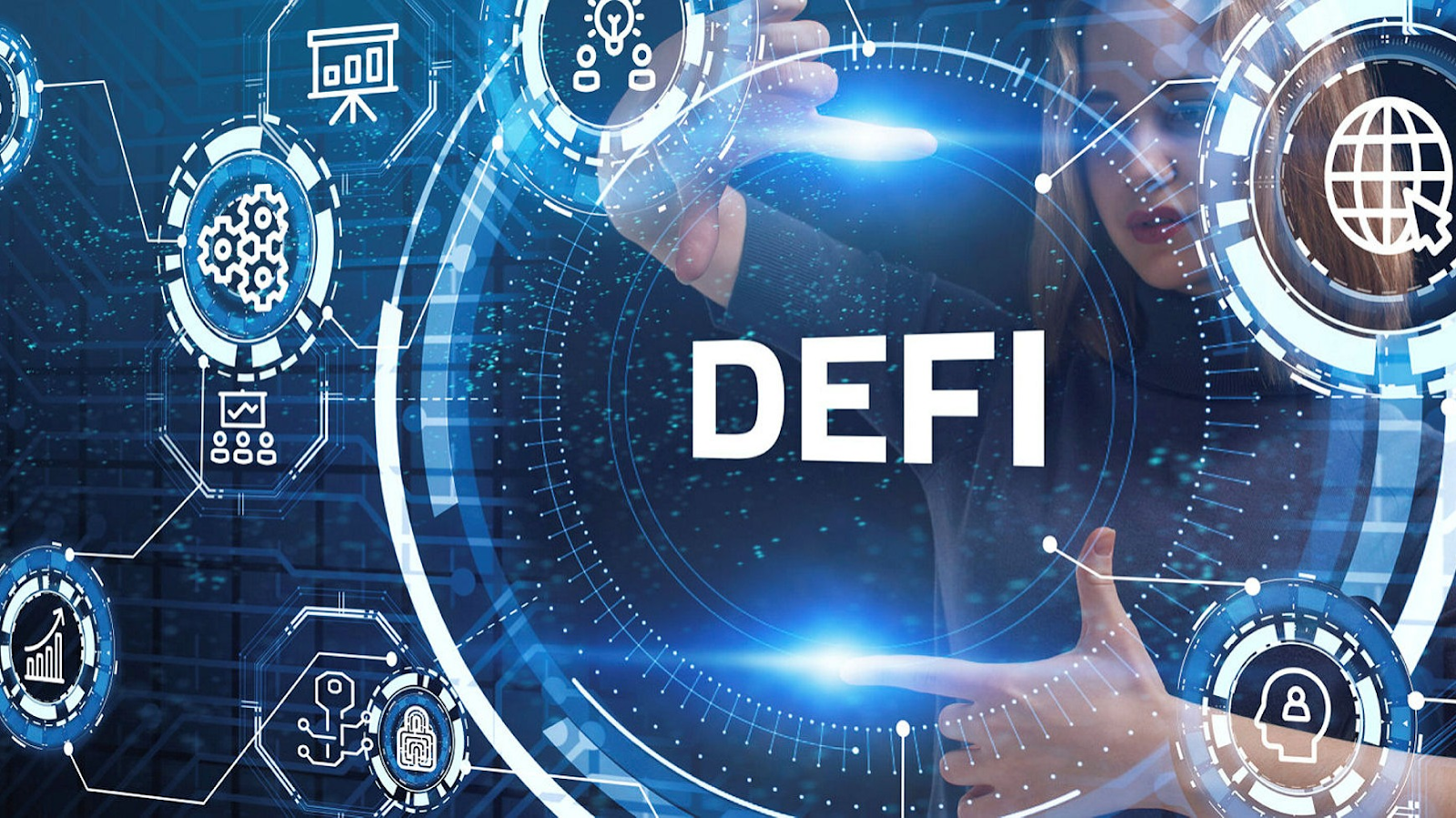With the rising popularity of bitcoins, other blockchain applications are also heard. Take Decentralized Finance (DeFi), for example. The technology is expected to reshape the finance industry next few years. However, whether it has a future or not is a question.
In this article, let’s analyze the opportunities and risks of DeFi down below to find an answer!
What Is DeFi and Its Usage?

DeFi, fully known as a decentralized finance service, runs on a decentralized nature of a blockchain. Anonymous parties use programmed smart contracts to automate financial transactions and agreements without the involvement of central institutions or intermediaries. No particular individuals or parties control the operations or make decisions within the chain.
Also interesting to read: The Differences Between DeFi and Traditional Bank.
Promisingly, the technology helps reduce complicated legal obligations, paperwork, or high transaction fees. DeFi also increases the transparency of transactions because all changes are recorded with particular timestamps.
According to Statista, the market share of DeFi in early 2022 was around $77.29 billion, and the number of users in unique addresses reached 4.8 million. The figures grow even more at the time we publish this article.
Opportunities and Risks of DeFi
Convenient decentralized finance sounds like it is still a booming technology with many underlying vulnerabilities.
In the next part, we bring all opportunities and risks of DeFi in one place so that you can compare them from pounds to pounds.
In The Bright Side

Experts are optimistic that DeFi will become mainstream in the financial system by solving inherent problems of traditional centralized finance, such as limited access, inefficiency, opacity, hierarchy control, and interoperability. That way, technology presents opportunities.
- Applications in multiple sectors
For the time being, decentralized finance services are the most helpful in fastening the borrowing and lending between parties.
Usually, centralized institutions like banks or mortgage lenders require lots of time and effort to verify the credibility and fixed asset collateral before accepting loans.
However, DeFi simplifies the process. The borrowers use their crypto assets as collaterals and borrow a receive a portion of their collaterals. Meanwhile, senders reive a DAI or governing token as interest. There is no need for liquidity mining.
Besides that, DeFi also offers opportunities to exchange digital assets, the insurance industry, the gaming industry, and more.
- Efficiency and Flexibility
Token transfers are supposed to be much faster than traditional transfers since they reduce the intervention of intermediaries and cross-border challenges. As such, a DeFi service can connect billions of people worldwide and effectively contribute to its openness. It is also able to restrict access to particular tokens, e.g., derivative or security tokens.
That DeFi runs on automatic smart contracts also reduces the chances of human errors.
- Trust and Transparency
Conventional financial institutions rely on trusted intermediaries, heavy regulations, and long-standing expectations. It means a multi-layered and time-consuming trust infrastructure of competition, supervision, and oversight.
Blockchain-based financial services use technologies to deliver confidence. In DeFi, trust is trustless on any third-party operators. Accordingly, operational and executive rules are encoded as smart contracts in protocols.
As such, every transaction is recorded and transparent to all participants in the network. Then, everyone can trace and verify any suspicious transactions and, more importantly, know whether the blockchain works as planned.
- Less fee and high interest returned.
Usually, you only get a small interest for your online savings account. For instance, a traditional bank can turn your money around and lend it to others at 3% interest. The bank keeps 2.5% profit in its pocket and pays back only 0.5%.
DeFi, in the meantime, cut out the 2.5% profit loss and paid a full 3% return. It is only required to pay some platform fees.
This is the beauty of technology.
In The Dark Side

Prominent as it is, DeFi is still a recent innovation that does not completely follow the standardized coding or stress test by widespread or long use. In addition, there are almost no national authorities to regulate the system. Those limitations put the technology and its users at several risks.
- Technological risks
The architectural characteristics of a DeFi platform expose them to technical risks.
For example, developers can write vulnerable code, leading to improper execution of smart contracts since smart contracts are not changed unless there are enough voting tokens. It means it takes time and effort to fix the problems.
- Financial risks
So far, conventional financial systems are still the mainstream.
However, if DeFi is widely used enough, it can pose leverage, market, liquidity, and unemployment risks to the traditional players. Plus, there is high volatility in prices.
Automated smart contracts also reduce the collateralization of loans. Nearly all DeFi transactions of lending ask for 100% collateral equal to the value of loans.
- Illicit activity risks
Many users trust the blockchain mechanism, thinking that the blocks are immutable and secure.
It is only theory! Hackers are targeting DeFi to do illicit activities. In 2021, crimes related to cryptocurrencies reached their all-time high, in which illicit addresses were equivalent to $14 billion – nearly double that in 2020.
- Legal and regulation risks
There is little user protection because the DeFi mechanism thrives without legal regulations. Some might use the technology to bypass laws, which opens the door for sanctions, embargoes, or money launderers.
In an unfortunate case, when a transaction goes foul, users also lose their assets.
The Future of DeFi
Weighing both opportunities and risks of DeFi and considering that there are more contributors to enhance the technology, DeFi is still a good application for the future.
You can test the water by joining a specific DeFi since there is no access barrier.
 4 minutes read
4 minutes read
